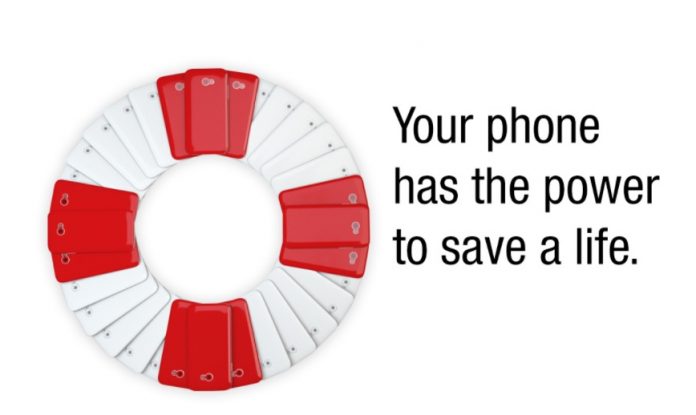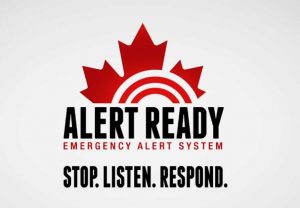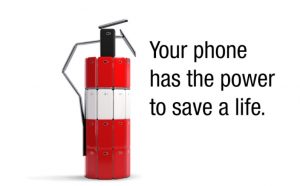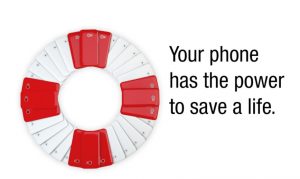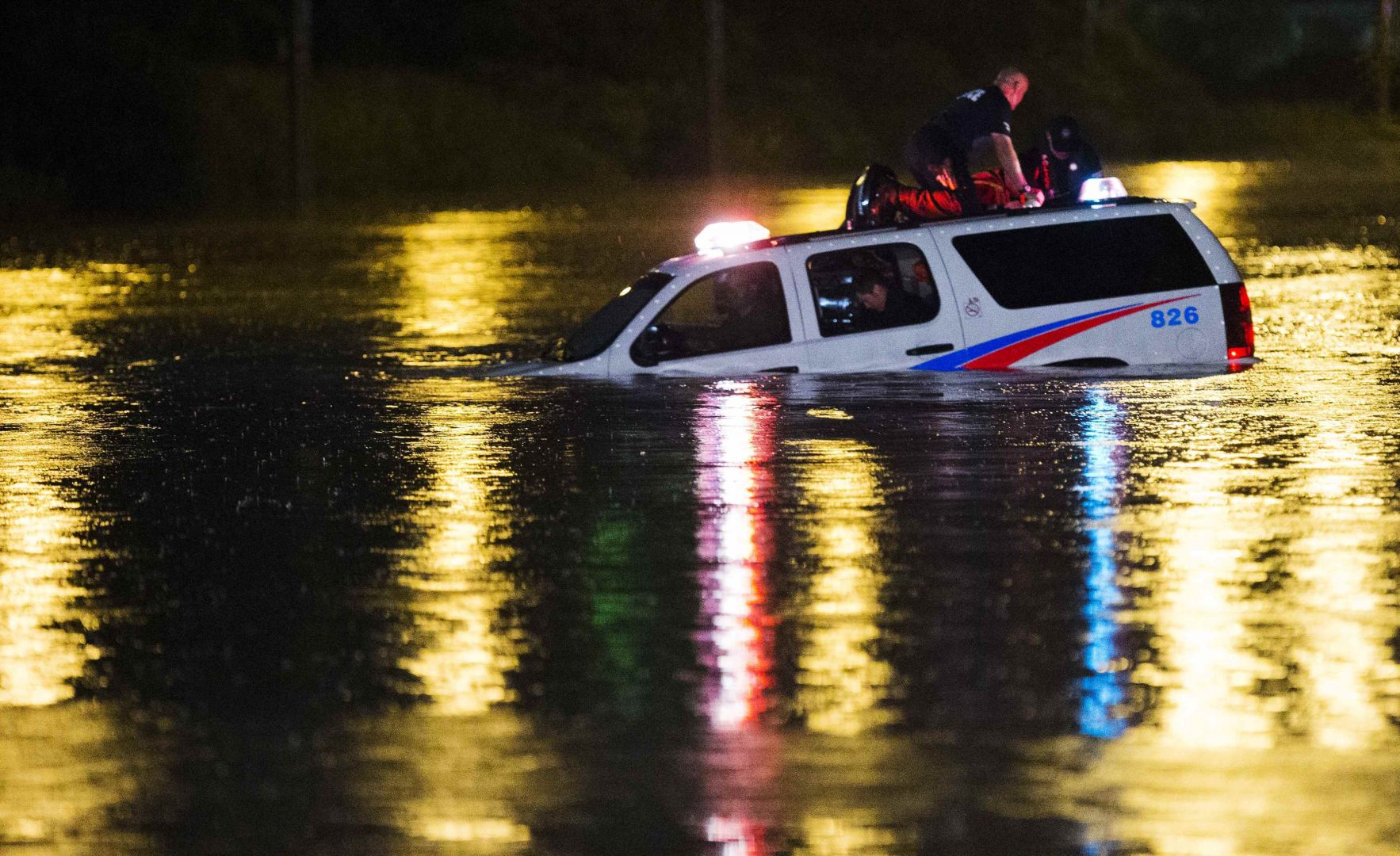Starting April 6th, 2018, in addition to TV and radio, Alert Ready will be sending life-threatening emergency alerts to cell phones and wireless devices that are compatible with Wireless Public Alerting (WPA).
When an alert is heard, it is the responsibility of the public to stop, listen and respond as directed by the issuing authority and the alert message.
Alert Ready is designed to deliver critical and potentially life-saving alerts to Canadians through television and radio.
The Alert Ready system is developed in partnership with federal, provincial and territorial emergency management officials, Environment and Climate Change Canada, The Weather Network and the broadcasting industry and wireless service providers, to ensure you receive alerts immediately and know when to take action to keep yourself and your family safe.
The Alert Ready system was developed in partnership with federal, provincial, and territorial emergency management officials, Pelmorex Corp., the broadcast industry, and wireless service providers to ensure you receive emergency alerts immediately and know when to take action to keep you and your family safe.
On compatible wireless devices, the emergency alert will display an “EMERGENCY ALERT/ALERTE D’URGENCE” banner, followed by text that describes the situation and provides instructions on what actions to take and where to find more information. At the top of each emergency alert, the issuing government agency will be clearly indicated.
If you are a person with a sight, or hearing disability: Alternate formats can be issued, but not every alerting authority or every device will have the capacity to produce alternate formats.
For emergency alerts distributed via compatible wireless devices, emergency alerts may be read to the recipient if their device supports this accessibility feature. The vibration feature that accompanies emergency alerts sent to compatible wireless devices will help to make hearing impaired people aware of the alerts.
Government officials developed a specific list of the types of alerts that are considered a threat to life and should be “broadcast immediately” on television, radio and wireless devices. Below is a complete list and description of these alerts.
Urban Fire
An urban fire threatens multiple residential and/or commercial properties.
Industrial Fire
A large fire in an industrial building or complex that poses a threat to human health.
Wildfire
A wildfire involves natural combustibles, such as grass, brush and trees.
Forest Fire
A Forest fire is a wildfire or prescribed fire that is burning in forested areas, grass or alpine/tundra vegetation and poses a threat to human safety.
Tornado
A tornado is a vortex of a violently rotating winds, often forming a funnel shaped cloud that is capable of damaging property and injuring people.
Flash Flood
Often occurring from river ice jams and excessive unexpected rainfall, a flash flood is the sudden onset of water causing immediate flooding. This event presents a unique danger to life and safety as there is little or no warning that this event will occur.
Earthquake
An earthquake is a sudden release of energy in the Earth’s crust that creates seismic waves that can cause substantial damage, especially in urban environments.
Hurricane
A hurricane is violent storm comprised of intense winds and, heavy rain, potentially causing a storm surge, floods, coastal erosion or landslides.
Biological
A potentially dangerous and poisonous substance that is usually very unstable and can be easily transferred between living organisms.
Chemical
A chemical substance that, if misused or released, could result in serious injury or death.
Radiological
With sufficient concentration, a radiological substance.
Drinking Water Contamination
When water quality is negatively affected and a boil-water advisory may be raised, cautioning use by the public.
Explosive
A potentially dangerous substance or device that may explode.
Air Quality
A decrease in air quality is caused by an elevated particulate count in the atmosphere that can negatively affect visibility or the health of individuals.
Falling Object
Natural or human-made materials at risk of falling, which may threaten people or property.
Terrorist Threat
The use of violence or threats of violence by individuals or groups against civilians or infrastructure.
Civil Emergency
A civil emergency occurs when humans cause a disruption of services or require varying levels of support, law enforcement or attention.
Animal Danger
When a wild or domesticated animal poses a threat to human life or property.
Amber Alert
An Amber Alert is issued by police services when a child has been abducted and it is believed that his/her life is in grave danger. An Amber Alert provides the public with immediate and up-to-date information about the abduction and solicits the public’s help in the safe and swift return of the child.
911 Service
A 911 service alert happens when there is a disruption or outage of telecommunication services between the public and emergency responders.
Test Message
A test message may be issued for either public awareness or technical testing purposes.
Who sends emergency alerts?
Federal, provincial, and territorial governments are responsible for issuing emergency alerts. Federally, emergency alerts are issued most frequently by Environment and Climate Change Canada. Each provincial or territorial government decides who will have the authority to issue alerts within their jurisdictions. For example, emergency alerts could be issued by provincial or territorial emergency management offices or in some cases by municipal emergency management offices or local police and fire departments. Media companies, including television, radio stations, cable and satellite distributors, as well as websites receive these emergency alerts and relay them to their consumers. Beginning April 6 2018, wireless service providers will be capable of distributing emergency alerts received from alerting authorities directly to their consumers’ compatible wireless devices connected to LTE networks using Cell Broadcast distribution.
Alberta
British Columbia
Manitoba
New Brunswick
Newfoundland and Labrador
Northwest Territories
Nova Scotia
Nunavut
Ontario
Prince Edward Island
Quebec
Saskatchewan
Yukon
What should I do if I receive a test alert on my wireless device?
Test alert messages will be identified as such. These messages are intended to “test” the functionality of the system, and inform consumers of wireless emergency alerts, and do not require consumers to take steps to secure their safety.
You may be required to acknowledge receipt of the emergency alert in order to allow for your wireless device to resume normal functioning. In the event that you cannot acknowledge the alert, the alert sound and vibration will continue for 8 seconds. Depending on your specific wireless device, additional reminders may occur.
What should I do if I receive an emergency alert on my wireless device?
Upon receiving the emergency alert it is important to take action safely. Stop what you are doing when it is safe to do so and read the emergency alert. Alerting authorities will include, within the emergency alert, the information you need for any action you need to take. This could include but is not limited to: limit unnecessary travel, evacuate the areas, seek shelter, etc.
What should I do if I receive an emergency alert on my wireless device while driving?
It is important to take action safely, especially if the emergency alert is received while operating a vehicle. If you are driving, it is important to remain calm and pull over at your earliest opportunity to view the emergency alert.
Emergency Alert Messages and the National Public Alerting System
Since April 6, 2018, the CRTC requires that all wireless service providers participate in the NPAS and begin distribution of wireless public emergency alerts on their long-term evolution (LTE) networks.
Emergency alert messages are issued by public officials who are designated by the federal government or your province or territory to warn the public of imminent or unfolding hazards to life and property (e.g., fire, natural disasters, biological threats, hazardous materials, environmental disasters, civil emergencies). These officials are also responsible for issuing scheduled test messages.
Each year, during Emergency Preparedness Week in May, wireless service providers and broadcasters will distribute a test alert. Read more about alert types and testing at Alert Ready.
For more information about the NPAS: National Public Alerting System.
_____________________________________________________







